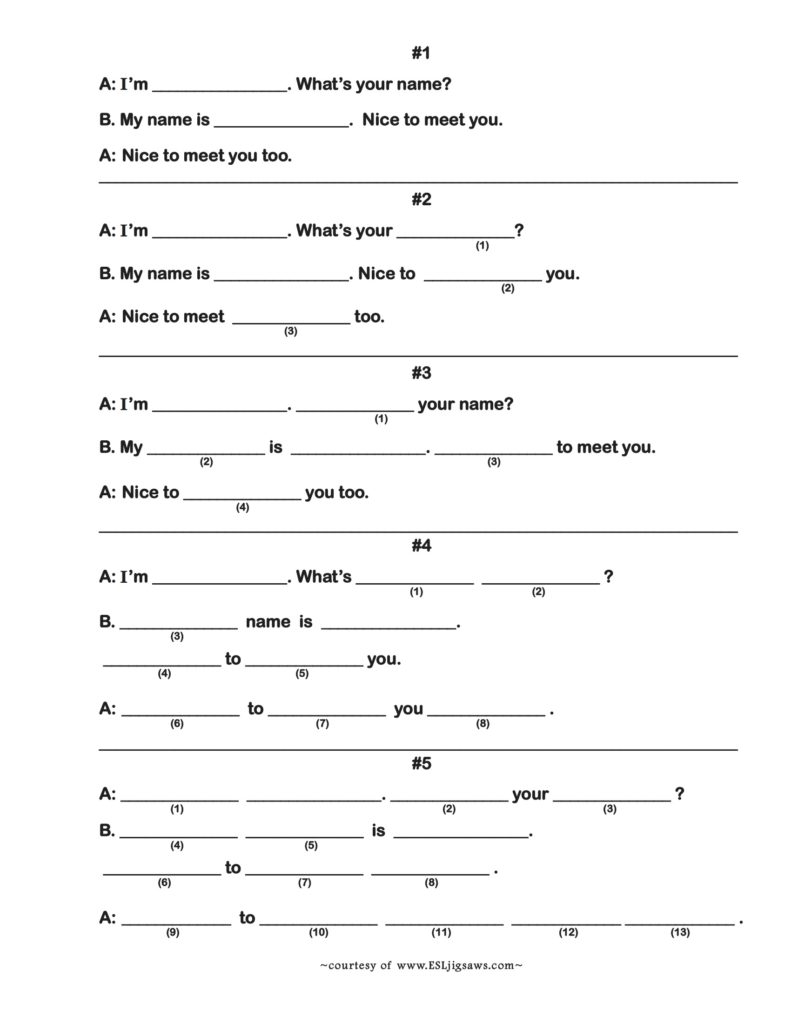Here’s an introductions speaking task for low beginner ESL answering the question “Where are you from?” I love tap sheets (see below). You could have students cut out the words and then arrange them into sentences, but you could also use it as is as a tap sheet, over and over.
Break students into pairs. Hand out one sheet per pair. Have each student write their country into one of the empty boxes on the sheet. Then have Partner A begin speaking and simultaneously, with a finger or the eraser side of a pencil, tapping on the words on the page to form the sentence in order:
Partner A will tap: “Where (tap) are (tap) you (tap) from (tap) question mark (tap)?” Partner B will tap: “I (tap) am (tap) from (tap), [country name] (tap) period (tap).” The roles are then reversed.
Students do not say the punctuation out loud, but they must tap on it. You may notice I have replaced this font’s letter I with a serif I because students at this level often confuse lower case l with upper case I.
Click on the image below to download the tap sheet for use in your own class.

You can follow up this introductions speaking task with an introductions writing task. Have students read and fill in the blanks, using a scaffolding approach until they are able to reproduce the entire dialogue.
Again, click on the image below to download it for use in your own class.

Let me know how it works in the comments below. Do you love tap sheets as much as I do?






